



Explained: How Singapore law proposes to crack down on ‘false’ online posts
Singapore notified the Protection from Online Falsehoods and Manipulation Act 2019, which will enable the government to order social media websites to take down posts deemed to be false.
- Online false statements have the potential to divide society, spread hate and weaken democratic institutions.
- Online falsehoods can incite hate or fear leading to violence.
- False rumours about child kidnappers led to violent incidents in India and elsewhere.
- It will prevent “communication of false statements of fact in Singapore and will enable authorities to take measures to counteract effects of such communication.
- It will suppress “financing and promotion of false statements of fact”.
- It will enable disclosure of politically motivated paid content.
- The Act’s definition of a falsehood is limited to a statement of fact and does not cover opinions, criticisms, satire or parody.
- As examples, the Ministry cites “Bank has lost $20 billion” as a statement of fact as opposed to the opinion that “Singapore’s institutions and policies are often elitist”
- Any minister from the government has the authority to instruct the “Competent Authority” if he believes a false statement of fact has been communicated in Singapore or if he believes it is in the public interest to issue a direction against the statement.
- If a statement is believed false, a direction will be issued to the individual or Internet services.
- Falsehoods will not be removed and corrections will need to be put up alongside by online platforms.
- In other cases, the Internet service may have to disable access to the material that is considered false.
- A set of binding “Codes of Practice” for technology companies covering three areas:
Inauthentic online accounts and bots, Digital advertising transparency and De-prioritising falsehoods — will be applied to “digital advertising intermediaries” or Internet intermediaries”.
- There is no specific law against fake news in India. Free publication of news flows from Article 19 of the Constitution guaranteeing Freedom of speech.
- Press Council of India, a regulatory body, can warn, admonish or censure the newspaper, news agency, the editor or the journalist or disapprove the conduct ofthe editor or the journalist if it finds that a newspaper or a news agency has violated journalistic ethics.
- News Broadcasters Association (NBA) represents the private television news and current affairs broadcasters. The self-regulatory body probes complaints against electronic media.
- Indian Broadcast Foundation (IBF) also looks into the complaints against contents aired by channels.
- Broadcasting Content Complaint Council (BCCC) admits complaints against TV broadcasters for objectionable TV content and fake news.
- Indian Penal Code (IPC) has certain sections, which could curb fake news: Sections 153 (want only giving provocation with intent to cause riot) and 295 (injuring or defiling place of worship with intent to insult the religion of any class) can be invoked to guard against fake news.
- Section 66 in Information Technology Act, 2000: If any person, dishonestly or fraudulently, does any act referred to in section 43 (damage to computer, computer system), he shall be punishable with imprisonment for a term that may extend to three years or with fine that may extend to five lakh rupees or with both.
- Civil or Criminal Case for Defamation is another resort against fake news for individuals and groups hurt by the fake news. IPC Section 499 (defamation) and 500 (whoever defames another shall be punished with simple imprisonment for a termwhich may extend to two years, or with fine, or with both) provide for a defamation suit.
-
Around 46 per cent of 14,197 hectares of land allotted for various Special Economic Zones (SEZs) in Gujarat has been lying vacant and it was proposed for solar power generation.
- Some of the SEZs have done commendably and have utilised the available resources to their fullest, but then there are many who still need to tweak their strategy and open up for more business endeavours.
- Government of India first introduced the concept of SEZ in the export import policy 2000, to provide an internationally competitive and hassle free environment for exports.
- SEZ refers to a specially demarcated territory usually known as ‘deemed foreign territory’ with tax holidays, exemption from duties for export and import, world level economic and social infrastructure for production and augmentation of export activities within the territory.
- The Special Economic Zones Act, 2005 provided statutory status to SEZ.
- A designated duty free enclave to be treated as a territory outside the customs territory of India for the purpose of authorised operations in the SEZ.
- No licence required for import.
- Manufacturing or service activities allowed.
- The Unit shall achieve Positive Net Foreign Exchange that will be calculated cumulatively for a period of five years from the commencement of production.
- Domestic sales subject to full customs duty and import policy in force.
- Full freedom for sub-contracting.
- No routine examination by customs authorities of export or import cargo.
- SEZ developers, co-developers and units enjoy direct tax and indirect tax benefits as prescribed in the SEZs Act.
- SEZs being set up under the SEZ Act, 2005 and SEZs Rules, 2006 are primarily private investment driven.
- Central Government do not sanction funds for setting up of SEZ.
- Fiscal concessions and duty benefits are allowed to developers and units as per the SEZ Act and Rules thereunder.
- The provision of SEZs Act, 2005 are applicable on manufacturing and services sectors.
- Out of 355 notified SEZs, 230 SEZs are operational.
- Exports from SEZ stand at 1, 60,699 crores in 2018-19.
- Employment in SEZ stands at 19, 96,610 in 2018-19.
- The trends of the national databases on economic growth of the country, trade, infrastructure, investment, employment etc do not indicate any significant impact of the functioning of the SEZs on economic growth.
- Sampled SEZs numbering 152 had non-performance in employment generation ranging from 65.95% to 96.58%, investment from 23.98% to 74.92% and export ranging from 46.16 to 93.81%.
- The SEZs that contribute to job creation are located in a few developed states.
- Ministry of commerce and industry has not prescribed any measurable performance indicators to gauge the real socio-economic benefits out of SEZs for the citizens and the state.
- Land appears to be the most crucial and attractive component of the scheme," noted the report. Out of the 45,635.63 hectares allotted for the SEZs, work commenced in only 28,488.49 hectares.
- In some cases, fraction of the land acquired was notified for SEZ and was de-notified later to benefit from price appreciation.
- CAG said the lack of internal audit facilitated developers to misrepresent facts to the tune of Rs 1,150.06 crores.
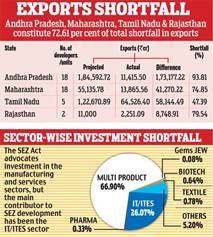
Reference: https://indianexpress.com/article/india/over-46-of-sez-land-allotted-in-gujarat-unused-6052941/
The ancient port town of Mamallapuram is in the final stages of a makeover ahead of the scheduled visit of Prime Minister Narendra Modi and Chinese President Xi Jinping during a two-day India-China informal summit from October 11.
- Five Rathas: Five monolithic pyramidal structures named after the Pandavas (Arjuna, Bhima, Yudhishtra, Nakula and Sahadeva) and Draupadi. An interesting aspect of the rathas is that, despite their sizes they are not assembled – each of these is carved from one single large piece of stone.
- Arjuna's Penance:
- It is a giant open-air rock relief carved on two monolithic rock boulders.
- The legend depicted in the relief is the story of the descent of the sacred river Ganges to earth from the heavens led by Bhagiratha.
- Krishna's Butterball
- It is a gigantic granite boulder resting on a short incline.
- It stands on an approximately 1.2-meter (4 ft) base on a slope, and is said to have been at the same place for 1200 years.
- Shore Temple
- It is a structural temple, built with blocks of granite, dating from the 8th century AD.
- It has been classified as a UNESCO World Heritage Site since 1984.
- Architecture is based on the Dravida style of temple.
Tiger State of India, Madhya Pradesh is inching closer to getting its seventh tiger reserve — the Ratapani Tiger Reserve.
A committee set up by the state government to finalise contours of the core and buffer areas of the proposed reserve, to be carved out of the Ratapani wildlife sanctuary, has submitted its report.
- While residents of Dantkhow village have been relocated, the process to relocate residents of three other villages is on.
- Besides the remaining five revenue villages, residents of three forest villages (spread over 3.070 sq km) will have to be relocated.
- It is not necessary that the government will automatically accept every recommendation of committee. If needed, the government can suggest some changes.
- After the state government, the recommendation will go to the state’s wildlife board.
- About 40 tigers live in the areas falling in the proposed reserve and it will be one of the bigger reserves in the state.
- The sanctuary is spread over Raisen and Sehore districts, but the tiger reserve will also include some part of the Bhopal forest division.
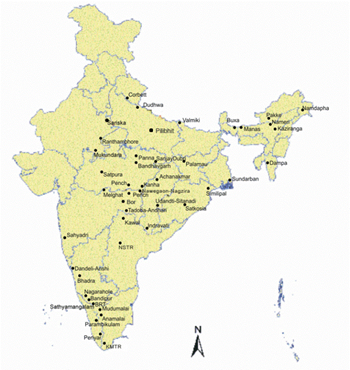
- The National Tiger Conservation Authority (NTCA) was established in December 2005 following a recommendation of the Tiger Task Force.
- A programme for protection called, Government of India in co-operation with WWF started ‘Tiger Protection Program’ (popularly known as Project Tiger) in 1973.
- The Wildlife Protection Act of 1972 was amended in 2006 to provide for constituting the National Tiger Conservation Authority responsible for implementation of the Project Tiger plan to protect endangered tigers.
- The National Tiger Conservation Authority is set up under the Chairmanship of the Minister for Environment and Forests.
- The Authority, would lay down normative standards, guidelines for tiger conservation in the Tiger Reserves, apart from National Parks and Sanctuaries.
Reference: https://indianexpress.com/article/india/madhya-pradesh-set-to-get-its-seventh-tiger-reserve-6052612/
Centre has cleared the appointment of Chief Justices to seven High Courts. The appointments come in the backdrop of Justices V Ramasubramanian, Krishna Murari, S Ravindra Bhat and Hrishikesh Roy being elevated to Supreme Court.
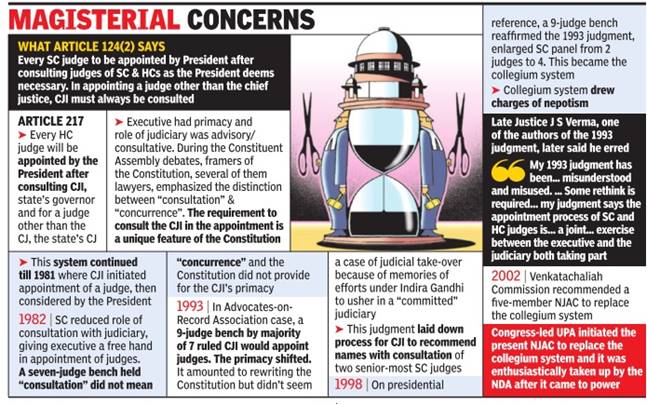
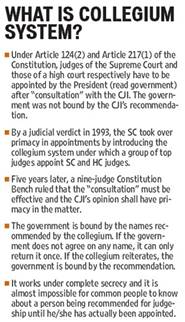
Reference: https://indianexpress.com/article/india/seven-high-courts-to-get-new-chief-justices-6052536/
Supreme Court has upheld the death penalty awarded to a man found guilty of raping and killing a two-year-old girl, daughter of a fruit seller, in Maharashtra in March 2012.
- Parliament had amended the POCSO Act and introduced the death penalty for brutal rape of children aged below 12.
- Parliament, armed with adequate data, has decided to introduce capital punishment for the offence of sexual abuse of a child; the Court hitherto will bear in mind the latest Legislative Policy even though it has no applicability in a case where the offence was committed prior thereto.
- Victim was barely a two-year-old baby whom the appellant kidnapped and apparently kept on assaulting over 4-5 hours till she breathed her last.
- The appellant instead of showing fatherly love, affection and protection to the child against the evils of society rather made her the victim of lust. It is a case where trust has been betrayed and social values are impaired.
- In this case on one hand, the mitigating circumstances of the appellant dominate over the aggravating circumstances. So there is need to modify the death sentence to life imprisonment.
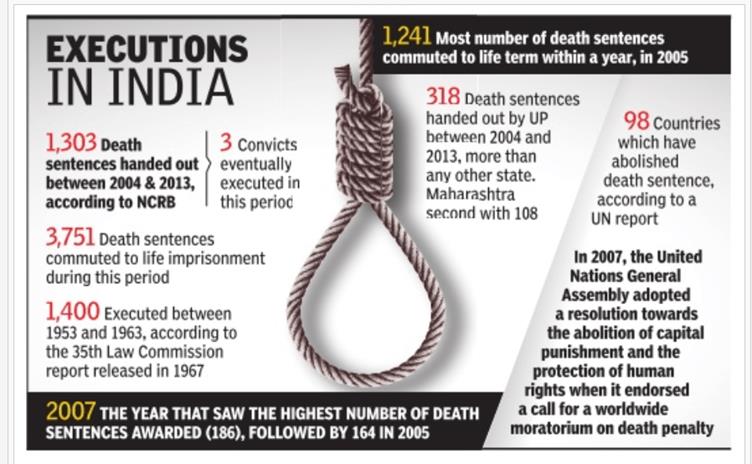
1. Punishment is not arbitrary because, it comes out of a judicial process.
2. It is being implemented in the “rarest of the rare” cases (last 13 years-only 4 people executed).
3. The hanging of Ajmal Kasab and Yakub Memon strongly affirms India’s commitment to the protection of life
4. Criticizing it on arbitrariness, irreversibility and human rights are not valid arguments.
5. Its constitutionality is upheld, even in liberal democracies like U.S. It is not reflection of uncivilised society.
6. India’s neighbourhood is not peaceful; unlike Scandinavia (is a region in northern Europe).
7. It is not in a group of countries, like European Union.
8. India has troubled borders.
- It unfairly targets poor and marginalised, that means, those without money & power.
- Executions occurred in 5.2 cases for every 1-lakh murders which it very irrational.
- Punishment should not imitate crime.
- Most of the civilised world abolished it. Death penalty has not deterred terrorism, murder or even theft.
- 2000-2015, SC imposed 60 death sentences. It subsequently admitted that it had erred in 15 of them (25%).
- The Police are not known for its probity or efficiency in our Country.
- How does killing a person who has killed a person show that killing is wrong?
- No study has shown that the death penalty deters murder more than life imprisonment.
- Death penalty is impossible to administer fairly or rationally.
- India’s murder rate has declined continuously since 1991 and is at present the lowest in our recorded history except for 1963.
- Studies show that equal sex ratio has more to do with declining murder rates than killing murderers.
- In Law commission of India’s 35th Report correctly called for its retention in order to see its impact on a new republic, the more recent 262nd Report could not recommend the punishment’s absolute abolition.
- Violent terror cases are constant reminders of the need to protect national stability by ensuring appropriate responses to such actions, and the death penalty forms part of the national response.
- The fundamental right to life and dignity enshrined under Article 21 of the Constitution also means the right to die with dignity

© 2025 iasgyan. All right reserved